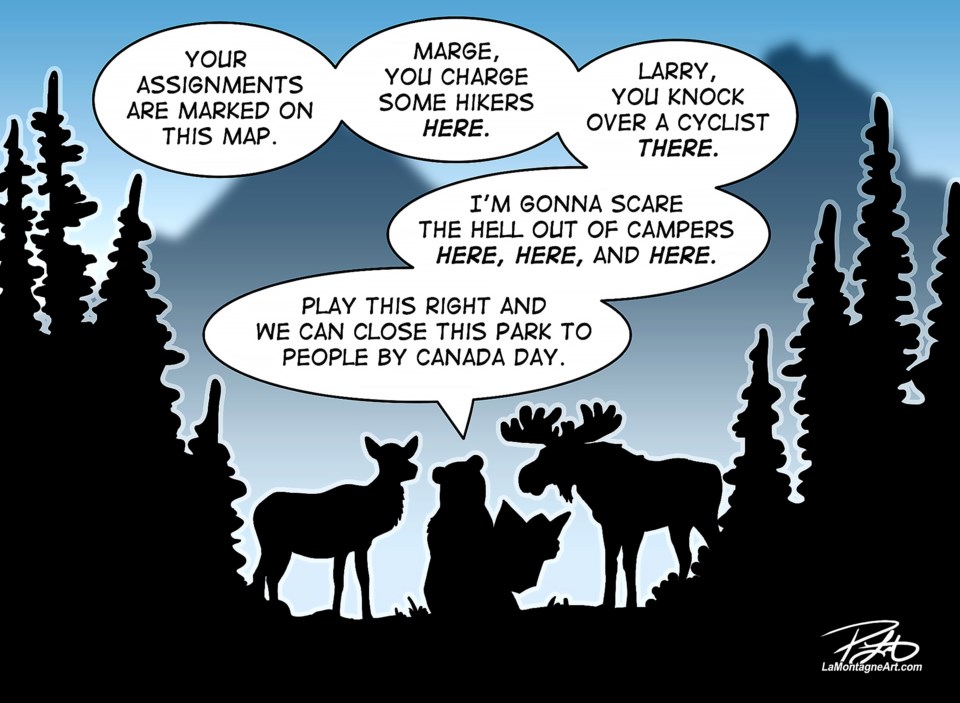Wildlife is wide awake, out and about and looking for food as winter – finally – thaws and gives way to spring and summer.
But just as bears wake from their slumber and elk calving takes place, so too have visitors descended on the Bow Valley and region.
The annual attempts to get a perfect photo of a grizzly or an elk have started in earnest, bringing frustrations to many but none more than the wildlife themselves.
As some people choose to pester and search for wildlife to get photos, the attempts can cause high amounts of harm and stress to wildlife and show the irresponsibility of humans who choose to do so.
The dangers of humans and wildlife coming into close contact have already been seen early into spring.
In Kananaskis Country, a black bear bluff charged a cyclist on May 16 and the next day an aggressive moose charged a person walking their dog in the area of Kananaskis Country’s West Bragg Creek day-use area.
Each year, however, there are countless examples in both the provincial and national parks of the region of people coming too close to wildlife.
Despite the majority of human-wildlife interactions involving visitors to the region, residents aren’t immune and need to be equally responsible.
It’s easy to blame visitors, but most locals have likely seen residents getting too close themselves or walking with a dog off-leash.
When out in the region, bear spray should become a necessity for all people. Equally important is maintaining a safe distance from wildlife at all times and checking for area wildlife warnings.
Both the Towns of Banff and Canmore have prioritized efforts to minimize human-wildlife interactions. Canmore council approved its Human-Wildlife Coexistence Implementation and Action Plan earlier this year, while Banff and Parks Canada has long had similar policies.
The gradual removal of fruit-bearing trees has continued, with many residents in the region subscribing to getting rid of what is effectively brunch for wildlife.
Banff Field Unit took a big step – albeit reluctantly – in Banff National Park by instituting a no-stopping order along a section of the Bow Valley Parkway. It came after people flocked to the area in search of well-known aging grizzlies The Boss (bear No. 122) and Split Lip (bear No. 136), with reports of people crawling to get close for photos as the bears fed on spilled grain near the train tracks.
The move is similar to what’s done in Jasper National Park to minimize stress on wildlife with its restrictive activity order that requires people to stay in vehicles when watching wildlife. In Grand Teton in northwestern Wyoming, the law dictates people maintain a minimum of 100 yards (91 metres) from bears and wolves.
The Lake Louise, Yoho and Kootenay field unit will also occasionally bring in a no-stopping zone near Field Hill in Yoho National Park when a white-coloured female grizzly makes appearances in search of food.
However, by cutting its bear guardian program that monitored and prevented traffic jams that are caused by people trying to see bears, a step backwards was taken in human-wildlife safety.
With more than four million people annually visiting each of Kananaskis Country and Banff National Park and growth to continue in all area communities, the emphasis and importance on individuals respecting human-wildlife interactions becomes all the more important.
No matter how many policies are created, warnings given, education provided and signage installed, it’s everyone’s role to minimize such interactions.




